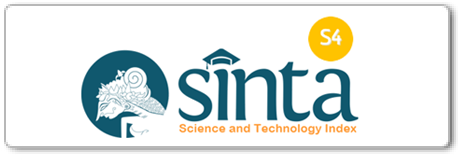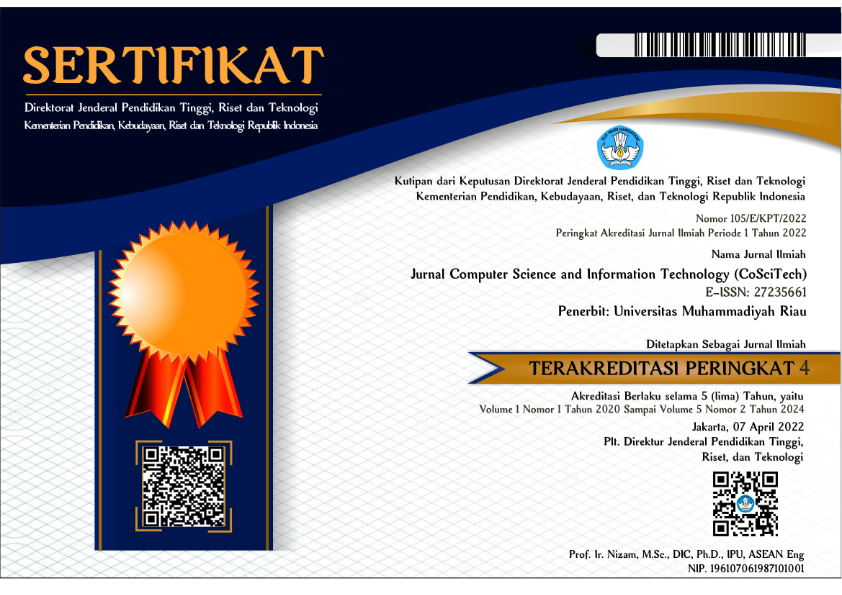Implementation of Naïve Bayes in the Analysis of Public Sentiment on Twitter for Shopee's Flash Sale
DOI:
 https://doi.org/10.37859/coscitech.v4i1.4779
https://doi.org/10.37859/coscitech.v4i1.4779
Abstract
Rumors spread among the public that there was fraud occurring during the ongoing flash sale Shopee process. In order to answer the problems found, this study aims to find out how the public feels about the flash sale activity. Data was taken using the Twitter API, and the tweets used started from January 2021–June 2021. As a result, there were 3,467 Twitter data points. After passing through the text preprocessing stage, the data becomes clean data, which amounts to 457. The research results obtained using the Nave Bayes Classifier method show the results of public opinion on Twitter with positive sentiment categories of 19.4%, negative sentiment categories of 43.1%, and neutral sentiment categories of 37.4%, with an accuracy rate of 98%.
Downloads
References
[2] Kominfo, “Kominfo : Pengguna Internet di Indonesia 63 Juta Orang,” www.kominfo.go.id, 2013.
[3] Unknown, “best-hashtags flashsaleshopee,” 2021. http://best-hashtags.com/hashtag/flashsaleshopee/
[4] R. Nabilla and C. Dr. Drs. Zaki Baridwan , Ak., M.Si., CA., CPA., “Analisis Kesesuaian Siklus Pendapatan E-Commerce,” vol. 1, pp. 1–13.
[5] B. Liu, “Sentiment analysis and subjectivity,” Handb. Nat. Lang. Process. Second Ed., pp. 627–666, 2010.
[6] W. Khofifah, D. N. Rahayu, and A. M. Yusuf, “Analisis Sentimen Menggunakan Naive Bayes Untuk Melihat Review Masyarakat Terhadap Tempat Wisata Pantai Di Kabupaten Karawang Pada Ulasan Google Maps,” J. Interkom J. Publ. Ilm. Bid. Teknol. Inf. dan Komun., vol. 16, no. 4, pp. 28–38, 2022, doi: 10.35969/interkom.v16i4.192.
[7] S. Chen, G. I. Webb, L. Liu, and X. Ma, “A novel selective naïve Bayes algorithm,” Knowledge-Based Syst., vol. 192, no. xxxx, p. 105361, 2020, doi: 10.1016/j.knosys.2019.105361.
[8] V. A. Permadi, “Analisis Sentimen Menggunakan Algoritma Naive Bayes Terhadap Review Restoran di Singapura,” J. Buana Inform., vol. 11, no. 2, p. 140, 2020, doi: 10.24002/jbi.v11i2.3769.
[9] E. B. Susanto, Paminto Agung Christianto, Mohammad Reza Maulana, and Sattriedi Wahyu Binabar, “Analisis Kinerja Algoritma Naïve Bayes Pada Dataset Sentimen Masyarakat Aplikasi NEWSAKPOLE Samsat Jawa Tengah,” J. CoSciTech (Computer Sci. Inf. Technol., vol. 3, no. 3, pp. 234–241, 2022, doi: 10.37859/coscitech.v3i3.4343.
[10] R. Hayami, Soni, and I. Gunawan, “Klasifikasi Jamur Menggunakan Algoritma Naïve Bayes,” J. CoSciTech (Computer Sci. Inf. Technol., vol. 3, no. 1, pp. 28–33, 2022, doi: 10.37859/coscitech.v3i1.3685.
[11] S. Syarli and A. Muin, “Metode Naive Bayes Untuk Prediksi Kelulusan (Studi Kasus: Data Mahasiswa Baru Perguruan Tinggi),” J. Ilm. Ilmu Komput., vol. 2, no. 1, pp. 22–26, 2016.
[12] S. Agarwal, Data mining: Data mining concepts and techniques. 2014. doi: 10.1109/ICMIRA.2013.45.














